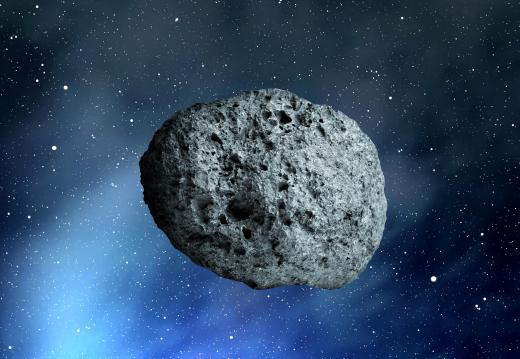What is the Risk of Asteroid Impact?
 Michael Anissimov
Michael Anissimov
The smallest asteroid impacts occur about twice a year. Only about 3 m (10 ft) in diameter, these rocks, moving at an average of 17 km/sec, have enough energy to cause an airburst twice the size of the Hiroshima bomb at an altitude of 43 km. Originally, there was concern that atmospheric asteroid impacts would be mistaken as nuclear explosions by sky satellites and initiate a nuclear war, but modern satellites are able to distinguish the characteristic double-flash of nuclear bombs. The Royal Astronomical Society considers anything smaller than 50 meters across to be a "meteoroid". Meteoroids are what are commonly known as "falling stars".
Larger asteroid impacts, more than 50 m (164 ft) across, occur about every 500 years. Similar to smaller asteroids, asteroids around this size usually lack the kinetic energy to make it to the surface, and explode in an airburst at an altitude of about 7 km. The energy of the airburst is about 6 megatons of TNT, equivalent to a small hydrogen bomb. An asteroid around this size is believed to have exploded above an area near the Tunguska river in 1908, creating an circle of scorched trees 50 kilometers (30 miles) in diameter. This is called the Tunguska event, and has helped encourage governments around the world to take the risk of asteroid impact more seriously.

Asteroid impacts by bolides around 250 m (820 ft) in diameter occur only once every 2,000 years or so. These asteroids actually tend to hit the surface, although they may break up slightly before doing so. The resulting energy is around a gigaton, about 20 times greater than the most powerful nuclear weapon ever tested, the Tsar Bomba. Such an asteroid impact is thought to have occurred on the Moon in the year 1178, where it was recorded by a monk in Canterbury, England. This class of impact leaves a crater miles across.
Asteroids larger than 1 km (0.62 mi) in diameter are quite rare, occurring less than once every 50,000 years. However, they are the most destructive, and the most likely to threaten the human race, despite their rarity. Such an asteroid impact unleashes 50 gigatons of TNT worth of energy at its source, igniting everything for more than a couple hundred miles in every direction. If such an asteroid hit a populated area, it could kill millions of people. However, the likelihood of one hitting in the next 100 years is less than 1/500, and the probability of hitting a populated area randomly is less than 1/1,000.
AS FEATURED ON:
AS FEATURED ON:











Discuss this Article
Post your comments